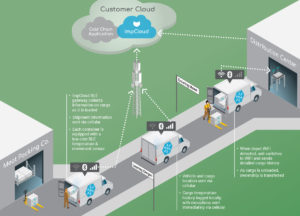Many businesses are already using the IoT to transform their products and services, demonstrating that innovation continues to reduce the overall cost and complexity of developing connected devices, while showing strong benefits — leading us to believe 2018 will be a decisive year for IoT deployments. This is the third of a three part series exploring the major trends that will help customers realize the true power and benefits of real-time IoT connectivity.
Low-Cost Cellular Connectivity will Speed IoT Adoption
As discussed in our previous posts, the endless potential for real-time connectivity in business and industrial applications is supporting steady growth in the IoT industry. In turn, the IoT is playing a major role in the transformation of business — generating cost savings, new revenue streams and other benefits.
For IoT to make sense in a new application, solutions need to be integrated on platforms that can scale and handle millions of devices efficiently. The total cost of ownership must also be low enough for the business case to make sense. This is where we believe cellular connectivity will play a major role in 2018
The Benefits of Cellular IoT
When combined with low-cost devices in low energy consumption applications, cellular channels can provide the reliable coverage needed to cost-effectively implement IoT. Additionally, this wide-range and highly reliable form of connectivity offers customers with mobile or remote applications a compelling option to easily, rapidly and cost-effectively achieve secure connectivity.
Cellular IoT solutions can now be developed using a hybrid approach with a managed IoT platform such as Electric Imp’s. Unlike many cellular IoT solutions currently on the market, Electric Imp offers data transmission for the same connected device across multiple carrier networks to help customers reduce coverage costs and simplify logistical challenges. The operating system and security software on Electric Imp’s cellular channels and connected devices are continuously maintained and updated to help reduce the costs and complexities of lifecycle security management and device maintenance.
By combining cellular connectivity with a platform as a service, you can support long distance, low-power data applications such as asset optimization, telematics and location tracking — without the traditional complexities of deploying connected devices at scale.
 Example of impCellular solution with Cold Chain.
Example of impCellular solution with Cold Chain.
Solving the Carrier Challenge
Unlike many cellular IoT solutions currently on the market, the Electric Imp cellular solution works seamlessly with multiple carriers to ensure the best performance and to maximize coverage which helps customers reduce coverage costs and simplify logistical challenges. This means that wherever your devices go, Electric Imp’s solution will automatically connect to the network with the best coverage — with no interruption and only one contract.
As mentioned above, this packaged solution helps advance security and ease internal management burdens, as the operating system and security software on Electric Imp’s cellular channels and connected devices are continuously maintained and updated to help reduce the costs and complexities of lifecycle security management and device maintenance.
It may seem too good to be true, but pricing for Electric Imp’s cellular connectivity is based solely on the number of devices connected over time, with no activation or associated costs for transmitting or receiving OS software updates. This means that you only pay for the data you transmit when you transmit it, which is a stark contrast to the cellular contract models of the past.
Enabling a Hybrid Approach
Although we believe that cellular connectivity will change the face of IoT over the next year, we continue to recognize the proven value of traditional connectivity methods such as WiFi or Bluetooth.
What is particularly unique to Electric Imp’s approach to cellular IoT is that you can have a native WiFi or Ethernet solution that can include integrated cellular backup. With this approach, you can utilize cellular connectivity as a cost-effective “failover” or back-up option for traditional connectivity methods. This helps optimize data volumes dependent on the currently active network type. For example, your WiFi connected device would automatically switch over to the most effective cellular network if it were to lose signal — and you’d only pay for the data transmitted until WiFi connection was restored.
Closing thoughts
The strength and coverage areas of cellular networks continue to expand as pricing becomes more competitive, leading to affordable IoT applications that can go beyond the constraints of local area networks. These networks also provide the same levels of security and scalability as traditional connectivity options when paired with the right IoT platform.
Just like our WiFi and Bluetooth offerings, Electric Imp manages the burden of threat mitigation and security updates with all cellular devices. This continuous support ensures products remain safe and securely operational without expending in-house engineering resources. On a platform with this level of device support, cellular IoT truly has the capability to provide unmatched levels of reliability, flexibility and time-to-market.
To learn more join our webinar Reinventing Cellular IoT with CEO Hugo Fiennes